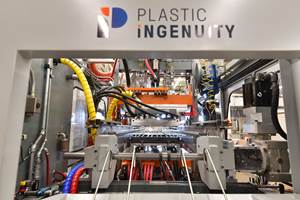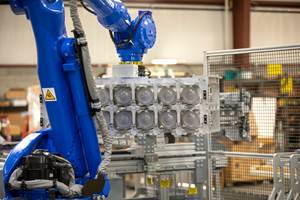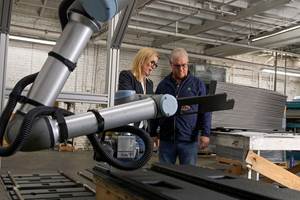K 2016 Preview: Thermoforming
Machine builders put the pedal to the metal with new packaging lines that set speed records. You’ll also see a new ‘twist’ in thermoforming.
Ready to witness record-breaking speeds in thermoforming? At K 2016, Oct. 19-26 in Dusseldorf, Germany, you’ll have lots to see, and best not blink or you might miss something. As usual at K, machines for packaging applications are the headline grabbers.
Perhaps the most intriguing thermoformer to debut at K 2016 will be displayed by Italy’s OMV, part of Swiss industrial group Wifag-Polytype Holdings Ltd. . The OMV RM77 Revolver is fully automatic, with in-mold trimming, for making cups and tubes. It is so named because of what the machine builder calls a “twist”—namely, a revolving mold.
As the company explains, the tools are made of three “semi-molds,” one negative and two positive, placed on the same vertical axis. The negative mold half operates at full cycle speed (start position to end position and back), while the two positive mold halves complete their cycle every two cycles of the negative half. This design reportedly allows formed material to remain in the cavity for an additional cycle, which is said to improve part quality at increased production speed.
How fast? The former can reportedly run PP cups at up to 174,000/hr, said to be a world record, and is reportedly the first machine to break the barrier of 50 cycles/min.
The forming area is 770 × 480 mm (about 30 × 9 in.). Cutting force is 57 tons. Mold movement is driven by a torque motor. All other movements—indexing, cutting, and stacking—are driven by servo motors.
In addition to PP, the RM77 can form PS, PLA, PET, and multilayer sheet. It's equipped with a quick mold-changing system, fast air/water connections, and a quick mold exit from the forming/cutting station. It reportedly takes fewer than 6 hr for a complete mold changeover, from stop to restart.
Illig’s booth will feature new developments in in-mold labeling (IML). An automatic IC-RDM 70K roll-fed machine with a forming area of 680 × 300 mm (about 27 × 12 in.) will be coupled with its RDML 70b IML unit to decorate a variety of PP cups in different geometries. The 18-cavity mold has an output of approximately 17,280 rectangular PP cups/hr that will be simultaneously decorated on all four sides and bottom.
Illig (U.S. office in Chester Springs, Pa.) will also be showing a new flexible stacking and packaging system that reportedly can be quickly and easily connected to an Illig thermoformer. The integrated unit combines stack removal, inspection, and packaging. The removed stacks of formed parts can be packed as stacks in bags in conventional box sizes. Guided procedures for altering settings enable quick retooling for faster product changes. The product-handling system will be deployed on an RDK 54 thermoformer equipped with a 12-cavity cup mold with a shallow forming-segment base. Deli cups will be formed out of transparent APET film with an antiblocking additive.
Italy’s Amut Comi will show its ACF 820 series, billed as a rugged, reliable, flexible, and high-speed former for packaging that combines the features of the firm’s V and F series. The machines can accommodate a wide scope of materials, including all forms of PET and PS, as well as PP, PLA, and PVC to form trays, lids, fruit/vegetable boxes, flowerpots, clamshells, nursery trays, and plates.
Modular in design, the ACF can be supplied in various configurations: forming only, forming and cutting in the same station, forming and cutting in two stations, and forming-punching-cutting in three stations.
The series can be furnished with up or down stackers, a three-axis robot, and customized solutions to stack parts with different nesting requirements. It can be equipped with a wide range of options, including servo-driven plug assist on the upper and lower mold platens, high-performance mold clamping and cutting, quick-tool-change devices, and different oven configurations with power-saving heaters. The forming and cutting presses are equipped with counterbalanced platens to increase performance at high speeds.
This series of machines is completely servo driven and has new software for cycle control that, along with a user-friendly operator interface, guides the user through the settings pages and provides full diagnostic analysis.
What’s more, the ACF machines can be integrated with an IML system using a side-entry robot to load labels inside the forming mold. The use of steel-rule cutting molds reportedly makes this technology more competitive than IML systems based on punch-and-die molds.
Meantime, the new KTR 6.1 Speed from Kiefel (U.S. office in Portsmouth, N.H.) reportedly produces cups at rates to 45 cycles/min. A significant bump in punching force combines with a greater forming area to allow for additional cavities. The newly developed pre-stretching plug is actuated by a powerful linear motor. Faster pre-stretching has a positive effect on material distribution and processing speed, Kiefel explains.
A new vertical stacking-and-picking system allows the KTR 6.1 Speed to reliably produce even thin-walled cups. The system works without the assistance of brushes or rubber elements to eliminate friction, for smoother and cleaner production.
Kiefel’s newest Speedformer, the KMD 78 Power, will also be on display. This pressure-forming machine is for high-quality, click-on domed lids that are made with a precisely positioned hole for a straw. The machine will be exhibited along with printing stations and bag-packer devices. The system produces ready-bagged lids straight from rollstock with what Kiefel calls “a uniquely complete configuration” that includes printing, heating, forming/cutting, stacking, and packing.
On the machine at K 2016, the tooling was developed by Kiefel sister company Bosch Sprang in The Netherlands. It is designed for a combined positive/negative forming procedure. This forming/cutting tool uses a steel-rule blade. An automatic system removes the waste left by hole-punching.
Standard RDK80 toolsets reportedly fit this machine without modification. A tilted stacking system allows even delicate products to be removed in stacks of an ergonomically appropriate height. The bag-packing device is supplied as a modular addition to the stacking station. A camera system ensures that only components that meet high quality standards are actually packed.
GN Thermoforming Equipment, Chester, Nova Scotia, will exhibit for the first time the GN800, a high-speed form/cut/stack machine. It marks the company’s foray into that market and expands the company’s plug-assist machine offerings. The GN800 was developed in partnership with Agripak s.r.l. in Italy, which built and sold form/cut/stack machines until 2003. Based on a market analysis, GN confirmed the growing use of form/cut/stack technology by packaging manufacturers and concluded that a partnership offered the fastest entrance into the market.
The GN800 has a forming area of 800 × 570 mm (31.5 × 22.4 in.) and can form 150 mm above and below the sheet line. The cutting force of the forming/cutting stations is 75 tons. The GN800 has additional space between the forming and cutting stations, providing extra cooling time when running heavier-gauge materials or PP.
The GN800 features a standard oven that is four times the index length of the forming area. The machine incorporates high-efficiency solar heaters and cut-in-place capability is standard. The unit also features independent top and bottom servo plug drives for better material distribution.
The GN800 handles sheet widths up to 880 mm (34.6 in.) and sheet thicknesses from 0.25 mm (0.010 in.) to 1.5 mm (0.060 in). It handles all thermoformable grades of PET, OPS, HIPS, PLA, PP, and PVC. The company is currently targeting food, medical, and industrial packaging. The GN800 thermoformer is said to be competitively priced.
WM Thermoforming Machines of Switzerland will debut the Twist 700, designed to produce containers in PP, PP/EVOH, and PET that require very high quality and narrow dimensional tolerances.
Related Content
Sustainable Materials is Focus of Thermoforming Exhibits at K 2022
Thermoforming equipment makers including WM, Kiefel, and OMV will showcase processing of recyclable and biobased materials.
Read MoreIngenuity Is Part of This Former’s Name, and in Its DNA
Plastic Ingenuity started in a garage in 1972 and through a commitment to developing best-in-class products stands today as one of the largest custom thermoformers in the world.
Read MoreAn Automation 'First' for Non-Servo-Eject Trim Presses
Compact, flexible and configurable robotic system is said to be the first to enable thermoformers to fully automate product handling after a non-servo trim press.
Read MoreCobot Creates 'Cell Manufacturing Dream' for Thermoformer
Kal Plastics deploys Universal Robot trimming cobot for a fraction of the cost and lead time of a CNC machine, cuts trimming time nearly in half and reduces late shipments to under 1% — all while improving employee safety and growth opportunities.
Read MoreRead Next
Advanced Recycling: Beyond Pyrolysis
Consumer-product brand owners increasingly see advanced chemical recycling as a necessary complement to mechanical recycling if they are to meet ambitious goals for a circular economy in the next decade. Dozens of technology providers are developing new technologies to overcome the limitations of existing pyrolysis methods and to commercialize various alternative approaches to chemical recycling of plastics.
Read MoreHow Polymer Melts in Single-Screw Extruders
Understanding how polymer melts in a single-screw extruder could help you optimize your screw design to eliminate defect-causing solid polymer fragments.
Read MoreUnderstanding Melting in Single-Screw Extruders
You can better visualize the melting process by “flipping” the observation point so that the barrel appears to be turning clockwise around a stationary screw.
Read More

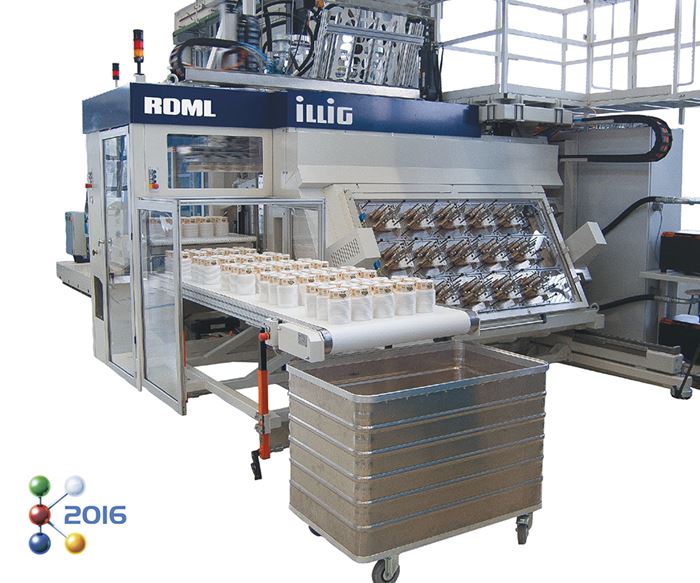
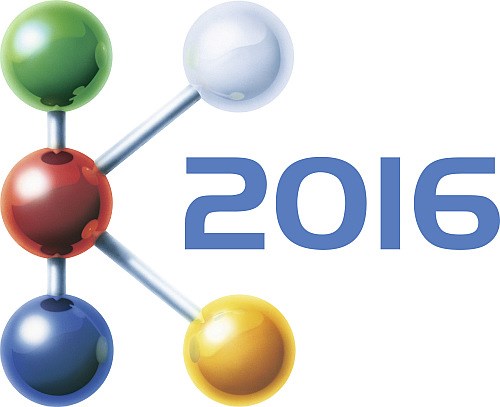
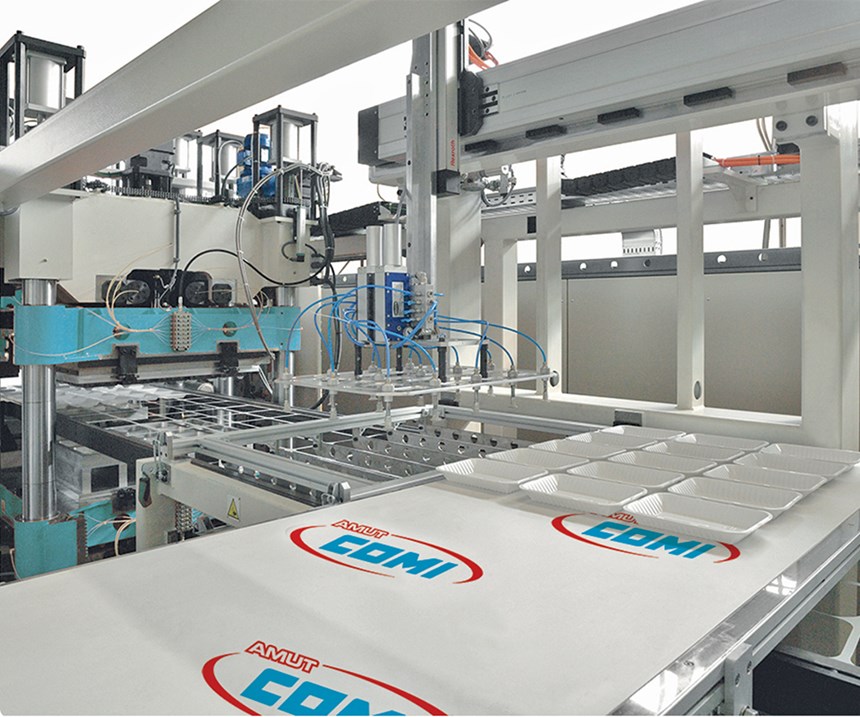

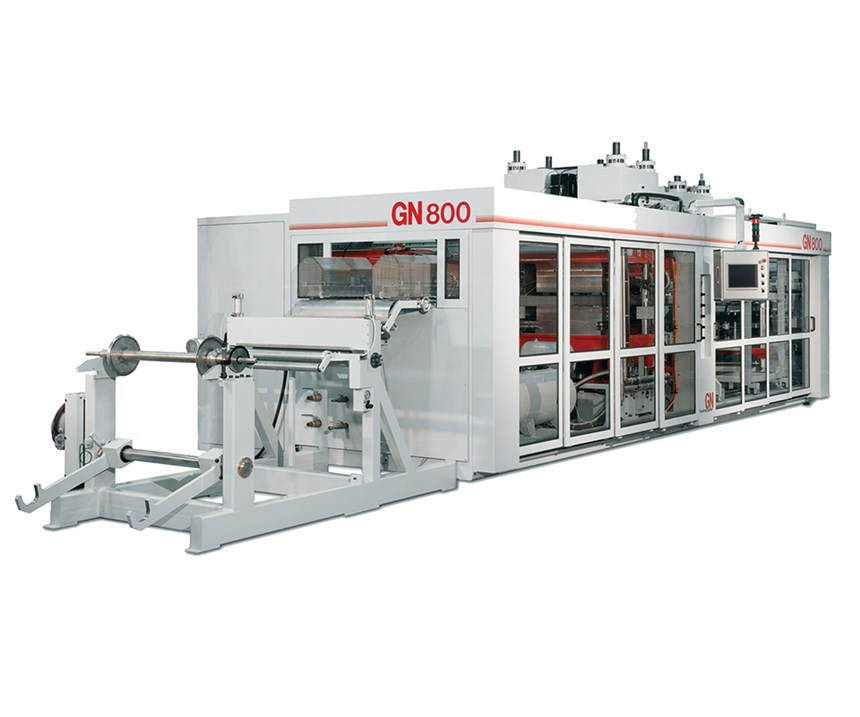


















.png;maxWidth=300;quality=90)




